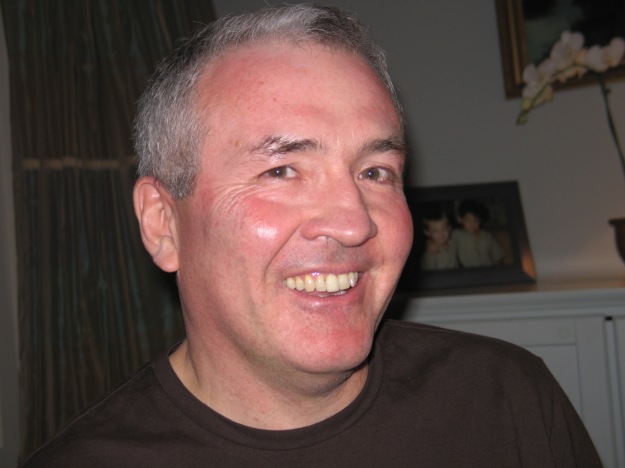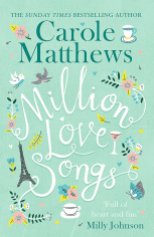As previously mentioned I love to go talks and workshops given by other writers. I am very much a course ‘junky’ and believe you always learn something new and it can’t be bad to reinforce what you already know.
Tony Bradman is one of my writing heroes. I particularly like him because he remembers who I am when we meet. In May 2006, I went to a SCBWI-BI Professional Series where author, Tony Bradman, was talking about story and what it is. His advice has always rung true with me and has had a big influence on my own writing.

Tony Bradman has been writing children’s fiction for over thirty-five years. He has written hundreds of books and edited many anthologies. He summed up story very neatly:
“A story is about the problems people face and how they overcome them. It is part of everyone’s life and can be told in different forms: film, plays and poems. Story is a form with a structure of its own. Very few people know what a story is and how to do it.”
The Art of Story
Tony explained:
“Often, when you start out as an author, you don’t know if a story works or not. This is a stage all writers go through. A writer needs to understand everyone reaches a stage where they don’t know if it is any good.”
Tony revealed he often struggles with stories he is working on. He claims it is very rare for him to write something and have the confidence it is as good as he can make it.
“In story, we concentrate on the pivotal point in which a character makes an action and the world reacts differently than expected. The essence of great story is surprise. The characters have flaws that influence the plot and the plot will have conflict, which changes the characters. It is a two-way process.
There are things that you can do that will help you through the problems of story. If you get half way through and get stuck, tease out the structures that might already be there. Step outlines and synopsis are stages of story that can help with a scene you are struggling with.”
Tony Bradman’s Approach
Tony said:
“All my stories start with a single idea that needs to be developed. Often if left, a story will reveal itself.”
When he starts a new story, he makes notes and descriptions of what the story is going to be. He likes to get to know his characters. When he begins to hear the dialogue he knows he is ready to write. If he knows it is not working and he is not happy, he will revise over and over again, often waking up in the night. After editing, he can look at it and know it is complete. By the time he has finished, he knows his stories word to word.
Tony prefers to edit his writing himself. He loves the challenge. He considers that one of the things that taught him most about writing is when he worked as an editor. He used the lessons he learnt from editing other people’s work in his own writing.
Tony told us:
“I have been known to write a 20,000-word summary, for an 1800 word story.”
He revealed that he writes the whole story without dialogue and puts a one-line description of each scene, highlighting the beginning, middle and the end, or as Philip Larkin says, a beginning, a muddle and an end. This way he can expose any weaknesses in the plot, any digressions and lack of tension. Tony believes it is the same technique for 100 as 100,000 words.
“Story is divided into three acts, sometimes more, never less. Each act can be broken into scenes, and each scene can be sub-divided too. In a typical scene, the protagonist embarks on a difficult task; only to discover that what is required of him is far more demanding than he first thought. It is under these testing circumstances that ‘deep character’ is revealed.”
Tony stressed:
“The two most important aspects of story are character and plot and of the two, character always comes first.”
Creating Strong Characters
Tony believes character is key to any story. He said:
“If a story is not working it is often the character that is wrong. Take a good look at your characters. Why do you like them? What do they want? They should want to solve the problem. This is the spine of the story. The key thing is to get the reader to engage with the character, so they want to know how they solve the problem.
“You need to think what is the best thing a character can get in life and how could this also be the worse thing. When people want something and do not understanding it is wrong for them it is known as a reversal. Story is a great way to explore this.”
A good example of reversal can be seen in Tony’s book, Under Pressure, where Craig, one of the thirteen-year-olds at the soccer school, wants his dad to love him and be involved in his life and when he is involved, he betrays his son by using him as a way to get money. Reversal is also evident in the sequel, Bad Boys, where Lee fights to make his own decisions, only to realise he made the wrong choices.
Tony advocates avoiding passive characters.
“Children are often powerless to do anything about the situations they find themselves in, such as parent’s divorce or moving home, but they should strive to deal with the problem on their own level. They have to come to terms with the fact that this event has happened and carve a new life out for themselves. The characters should always be striving for a goal. Even in 1500 words, the story problem is big and even though the child’s world is smaller, the child still tries to solve the problem.”
Tony thinks hard about the character and the world they live in. He needs to find out what their problem or conflict is and starts with the problem and develops the story from that. He said:
“Character is revealed in the choices a human makes under pressure. There has to be something about your main protagonists character that resolves the problem in the end.”
Tony believes the greatest stories have characters that have two levels: what you see on the surface and the flaws underneath. All great characters are flawed, part of the problem is learning about these flaws.
He said:
“Writing picture books is hard. It is less easy to explore the characters, as there are fewer words.”
You can see how important characterisation is in Tony’s books, such as the Dilly the Dinosaur series, about the world’s naughtiest dinosaur and The Happy Ever After stories, which explore what happens after the fairy tale ending. Do they really live happily ever after? Does the frog prince enjoy his life at the palace with his new bride, or would he really prefer to be living in that muddy old pond? How does Cinderella cope with the Queen as a mother-in-law? This is why Tony’s books appeal not only to young readers but their parent’s as well.
What About Plot?
Tony explained plot in a way that I will never forget. His words are always on my mind whilst I am writing.
“Plot is about life and human condition. If the plot doesn’t work, you can fix it but if your characters aren’t working you haven’t got a story. Nobody is going to read 250 words of character description.
Plot is the action in your story and should never be resolved by a coincidence. Everything within the story must be there for a reason. If it does not move the story forward in some way, it needs to be cut. It may be a great scene, but is it meaningless in the structure of the story?
The protagonist is an ordinary person, whose life is changed by an extraordinary event. This is the ‘inciting incident’. Life is chaos and every time you do some thing, it gets worse and worse. This is true of good story. Events must build up until the hero’s problem appears unsolvable.
The story then concerns the efforts of the protagonist to restore their life to normal. Inevitably, in the course of doing this they discover a side to themselves they were never aware of and become a better person.
Story, as a quest, has the hero’s journey in mind. It is about overcoming your greatest inner fear – your inner demon. In film, this is usually outside of the protagonist, but to overcome their fears they have to work out their inner problems. Once the problem has been overcome, they get their reward, as in the grail quest. There is usually one last great battle before the evil is destroyed and the protagonist achieves their aim.
The structure of story is always there. In the beginning, you meet the character and find out what the problem is. In the middle, the problem gets worse. In the end, the problem is resolved one way or another.”
This was one of the most inspiring talks I have been on and has helped me a lot in my own writing career. If you are interested in finding out more about Tony Bradman or booking him for one of your own events take a look at his website: www.tonybradman.com or follow him on Twitter @tbradman

















 When I wrote Ella on the Outside, which was published in May 2018, I was very influenced by my interest in drama and my long connection with running drama clubs and workshops. There’s something about the way children relate to one another, especially the subtle power play of groups, which really fascinates me. I like to write duologues where one character is much more powerful than another and get children up on their feet acting these out. Ella on the Outside is a lot to do with the power play of the playground, especially between girls.
When I wrote Ella on the Outside, which was published in May 2018, I was very influenced by my interest in drama and my long connection with running drama clubs and workshops. There’s something about the way children relate to one another, especially the subtle power play of groups, which really fascinates me. I like to write duologues where one character is much more powerful than another and get children up on their feet acting these out. Ella on the Outside is a lot to do with the power play of the playground, especially between girls.















